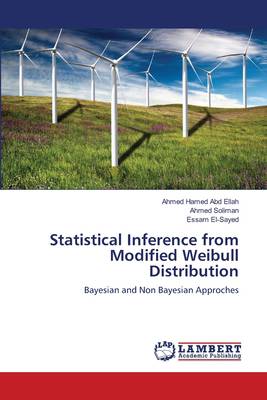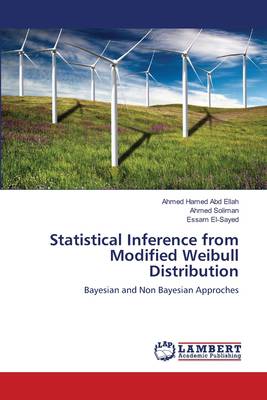
Je cadeautjes zeker op tijd in huis hebben voor de feestdagen? Kom langs in onze winkels en vind het perfecte geschenk!
- Afhalen na 1 uur in een winkel met voorraad
- Gratis thuislevering in België vanaf € 30
- Ruim aanbod met 7 miljoen producten
Je cadeautjes zeker op tijd in huis hebben voor de feestdagen? Kom langs in onze winkels en vind het perfecte geschenk!
- Afhalen na 1 uur in een winkel met voorraad
- Gratis thuislevering in België vanaf € 30
- Ruim aanbod met 7 miljoen producten
Zoeken
Statistical Inference from Modified Weibull Distribution
Bayesian and Non Bayesian Approches
Ahmed Hamed Abd Ellah, Ahmed Soliman, Essam El-Sayed
Paperback | Engels
€ 75,45
+ 150 punten
Omschrijving
Models with bathtub-shaped failure rate function are useful in reliability analysis and particularly in reliability related decision making and cost analysis. A modified Weibull distribution (MWD) was recently proposed by Lai et al.(2003) as a generalization of the two-parameter Weibull distribution. This distribution has both the two-parameter Weibull and the type I extreme value distributions as special cases. This lifetime distribution is able to model data with bathtub-shaped hazard rate, which is an important feature for engineering reliability analysis. Parameter estimation is crucial for the model to be built and is often a difficult problem, especially for distributions with more than 2 parameters. In this book, maximum likelihood estimation (MLE) is studied in detail. Several techniques regarding this estimation method are proposed to simplify computation. Another estimation method called Bayesian is used to estimate the parameters as well as some life parameters (reliability and hazard functions). We consider estimation of the modified Weibull parameters based on progressively Type II censored data, an adapptive progressively Type II censored data and upper record values.
Specificaties
Betrokkenen
- Auteur(s):
- Uitgeverij:
Inhoud
- Aantal bladzijden:
- 140
- Taal:
- Engels
Eigenschappen
- Productcode (EAN):
- 9783659492853
- Verschijningsdatum:
- 23/11/2013
- Uitvoering:
- Paperback
- Afmetingen:
- 150 mm x 220 mm
- Gewicht:
- 213 g

Alleen bij Standaard Boekhandel
+ 150 punten op je klantenkaart van Standaard Boekhandel
Beoordelingen
We publiceren alleen reviews die voldoen aan de voorwaarden voor reviews. Bekijk onze voorwaarden voor reviews.









